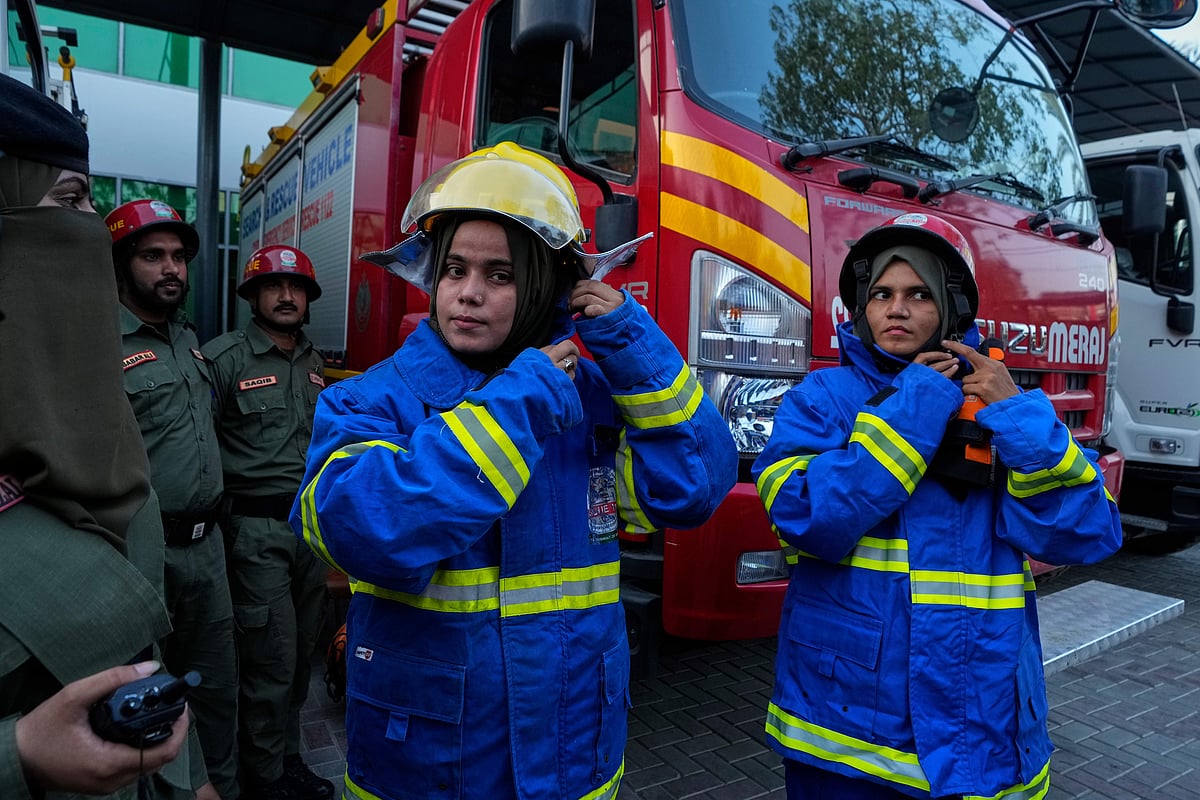Dubai: Flames erupted at a tyre storage facility on the outskirts of Karachi recently, sending thick black smoke twisting into the sky.
Among the first responders was 23-year-old firefighter Syeda Masooma Zaidi, one of the rare women serving in Pakistan’s fire services. Without hesitation, she joined her male colleagues, battling molten rubber and suffocating smoke as the fire threatened nearby factories.
Hours later, the blaze was under control. No lives were lost, though damages ran into tens of thousands of dollars. Onlookers cheered as the soot-streaked firefighters emerged, a scene that highlighted not only the dangers of the job but the growing presence of women in Pakistan’s emergency services.
Women were largely absent from firefighting roles in Pakistan until 2024. The trailblazing career of Shazia Perveen, the country’s first female firefighter in 2010 in Punjab, inspired a new generation. Today, Sindh province alone has around 50 women firefighters, with another 180 training as rescue divers, ambulance medics, and emergency responders.
High-angle rescues
Zaidi, a graduate of the Punjab Rescue Service Academy, has mastered high-angle rescues, industrial fires, and water emergencies. Yet public skepticism persists. “When we arrive, people say, ‘She’s a girl, how can she rescue anyone?’ But every time we save a life, we prove that women can also do this job,” she said.
Her colleagues, including 23-year-old Areeba Taj, have faced similar challenges but emphasised the unique strengths women bring to emergency work, especially when assisting women and children. Their supervisor, Ayesha Farooq, said, “By joining rescue services, they earn respect for themselves, and for the country.”
People still doubt us
For Zaidi, who grew up with seven brothers and one sister, courage, duty, and faith guide her work. “People still doubt us but every time we go out there, we keep proving them wrong,” she added.
Dr Abid Jalaluddin Shaikh, chief of the Sindh Emergency Service, said Zaidi is one of 50 women firefighters in the province. Another 180 are in training as rescue divers, ambulance medics and emergency responders. “The focus is no longer on breaking taboos. Now we see real results,” he explained.
With inputs from AP
Network Links
GN StoreDownload our app
© Al Nisr Publishing LLC 2025. All rights reserved.
